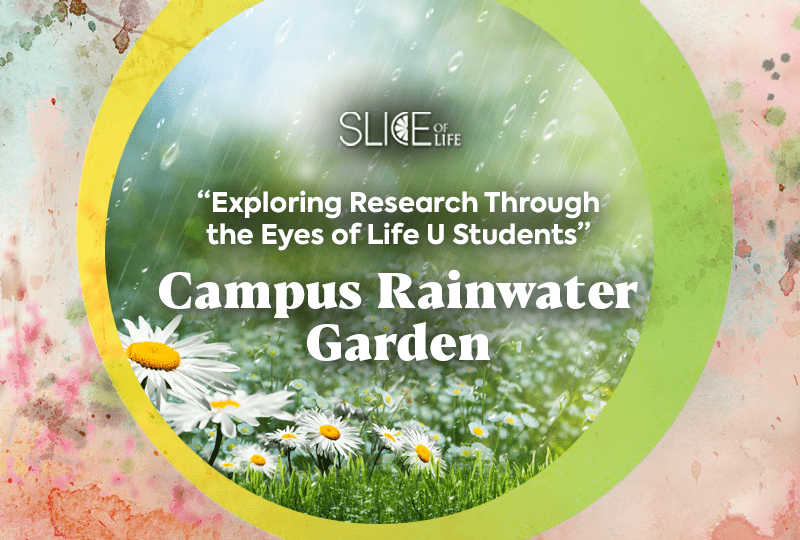Life University (Life U) Research Series
From Your Extraordinary LIFE (YEL) 2022 Edition
Exploring Research Through the Eyes of Life U Students
College of Graduate and Undergraduate Studies
Destinee Rivera, Double Major: B.S. Biology & B.A. Human Ecology, Advisor Dr. Stephanie Wakefield, Program Coordinator + Assistant Professor | Human Ecology Program, Research Chair
“Campus Rainwater Garden”
Destinee Rivera’s goal is to create a rainwater garden on the Life University campus, creating a green infrastructure by the Ian Grassam Treehouse. She will have six types of plants, including three types of flowers, two different types of shrubs and grass. The natural beauty of this garden will add to the pretty landscape of our environmentally friendly campus, and it will serve an important purpose.
Rainwater gardens don’t just collect the rainwater. These gardens, according to Michigan State University, filter out pollutants such as fertilizers, pet waste and grass clippings before they reach our main waterways. They can also help with flooding, drainage and provide “habitat and food for wildlife.”
“What the rainwater gardens do is catch the rain runoff from those grey and permeable surfaces, and they filter and drain the water out in less than 48 hours. You don’t have to worry about mosquitos laying eggs and producing. They drain the water and help recharge our groundwater supply. It also helps filter out toxins, contaminants and pollutants so that way it doesn’t go back into our water source, like the Chattahoochee River, or our groundwater supplies,” said Rivera.
According to the Environmental Protection Agency (EPA), “A rain garden is a depressed area in the landscape that collects rainwater from a roof, driveway or street and allows it to soak into the ground. Planted with grasses and flowering perennials, rain gardens can be a cost-effective and beautiful way to reduce runoff from your property. Rain gardens can also help filter out pollutants in runoff and provide food and shelter for butterflies, songbirds and other wildlife.”
Rainwater gardens can be implemented anywhere and do not need to be close to a water source. These gardens can be incorporated in already existing infrastructures, and not much tear-down needs to happen. They are also easy and inexpensive to create. They just need to be cleaned out every so often. The one thing that is needed to build a rainwater garden is a natural depression where water can pool and collect.
“My end goal in this project is to help Life University become a pioneer in urban sustainability and resiliency,” said Rivera.
If you would like to build your own rain garden, visit this link about how to build a rain garden in your yard.
This article was originally published in Your Extraordinary Life (YEL), Life University‘s Alumni and Friends Magazine, 2022- Volume 15. YEL started in 2009 as a twice-per-year publication before moving to three issues per year from 2010-2017. In 2018, University leadership made the decision to publish a larger, more elegant version of the magazine just once per year that our alumni and friends could be proud of. YEL features an in-depth look at all things Life University, from alumni and student human interest stories to recaps and previews of the University’s biggest events. If you are a proud Life University alumni, friend or supporter, this publication is one you can’t miss!
Read the latest issue and past issues at this link or pick up a print copy on campus.


Social Media